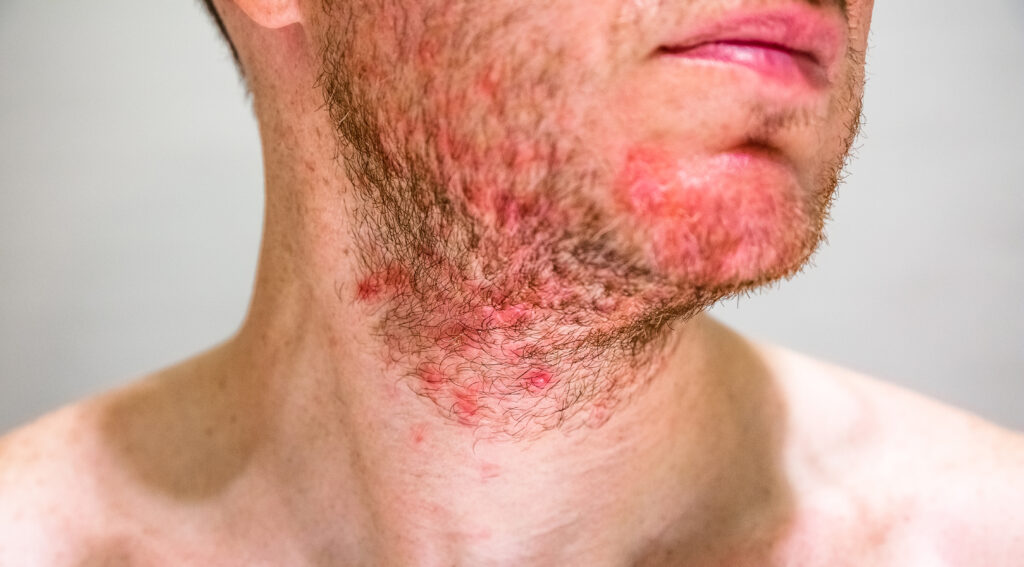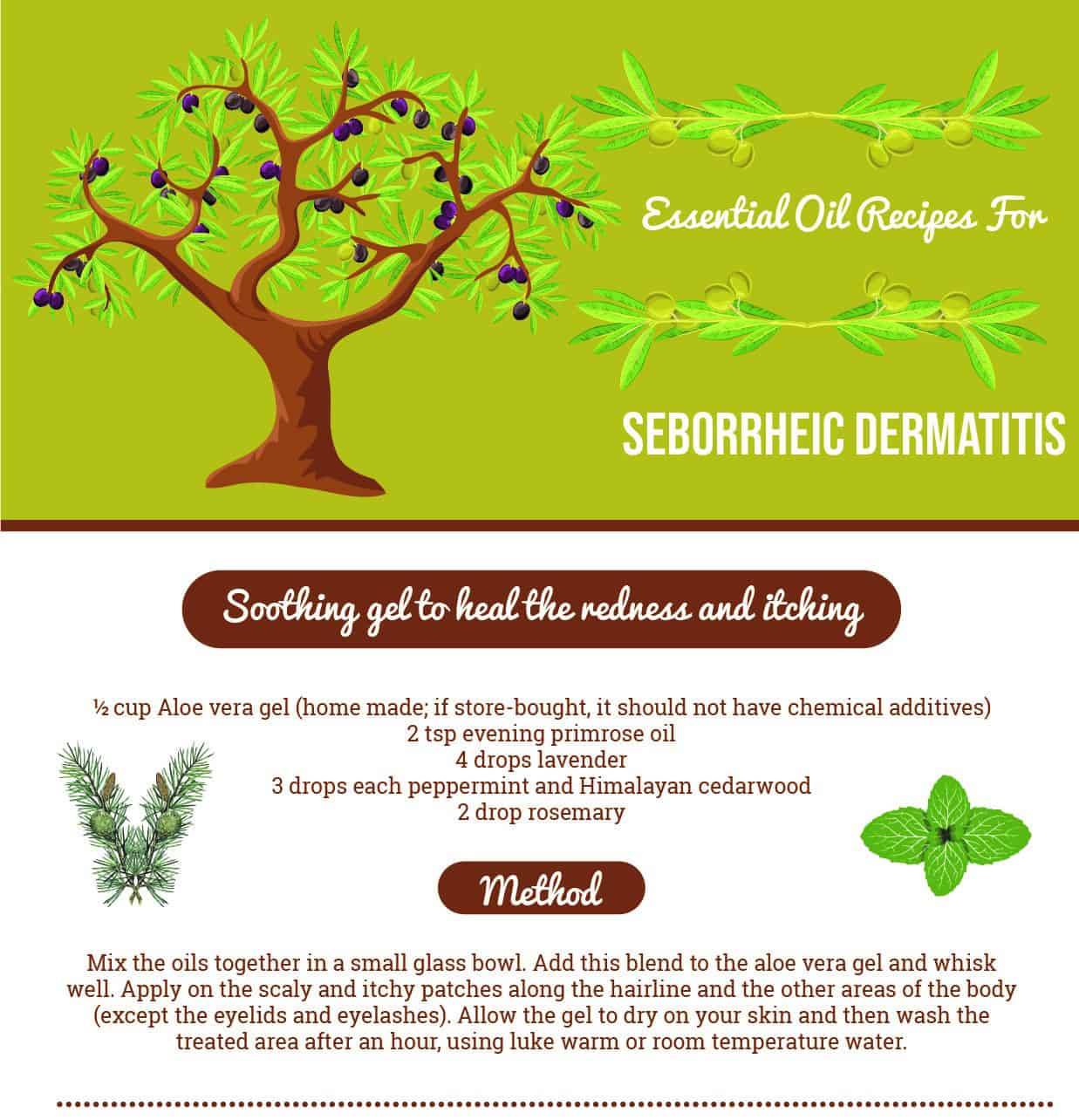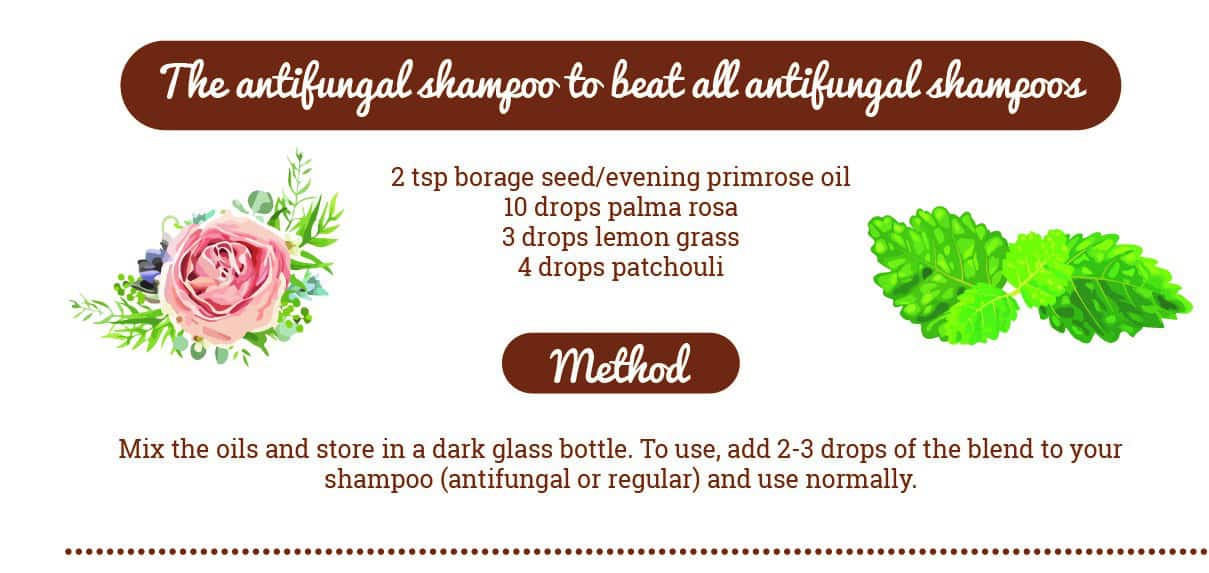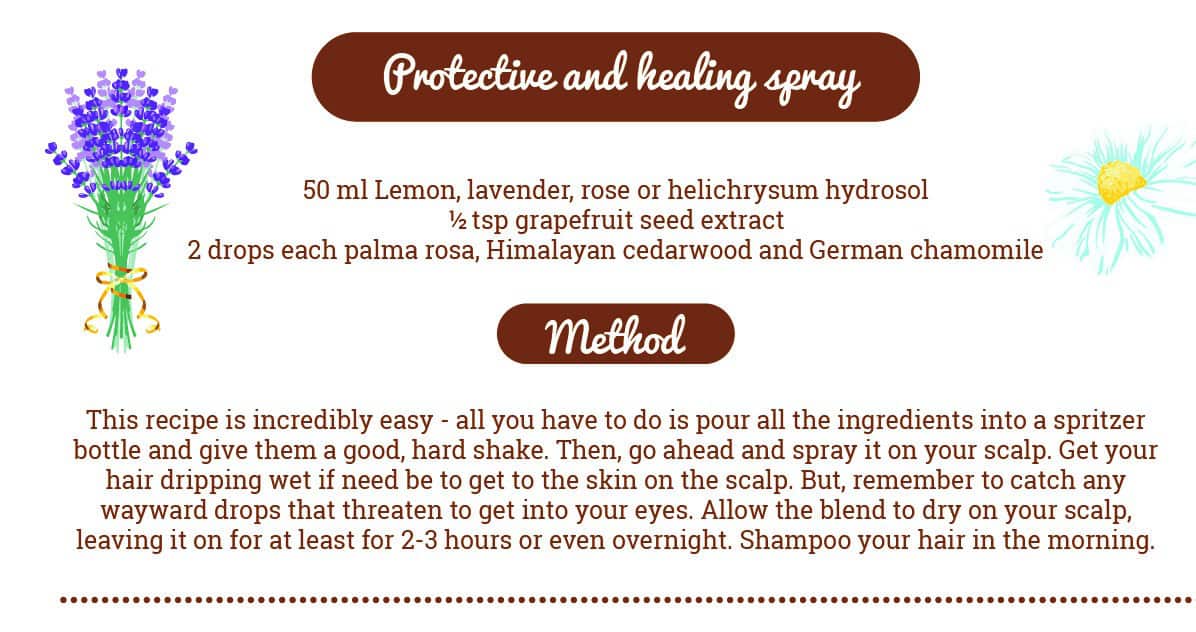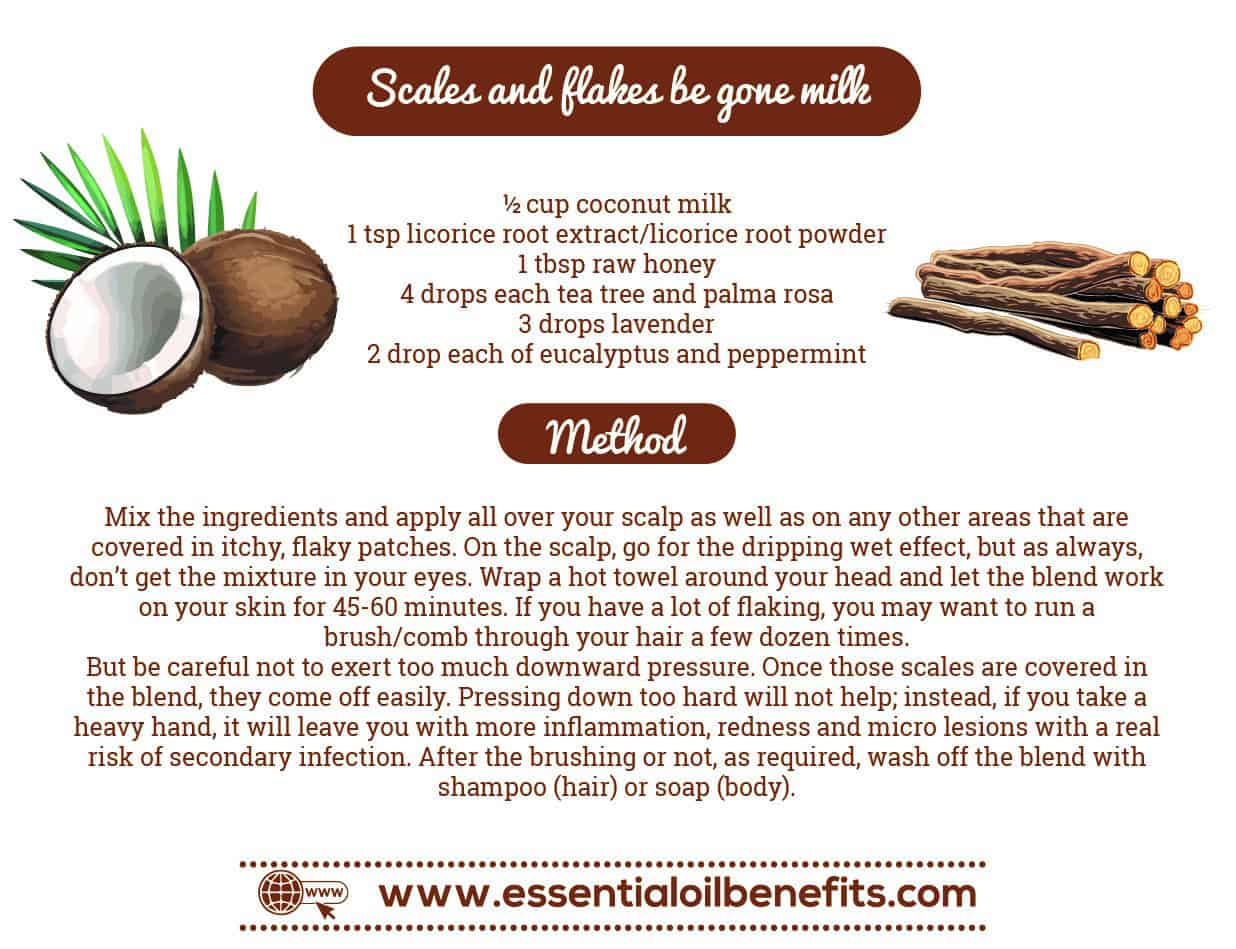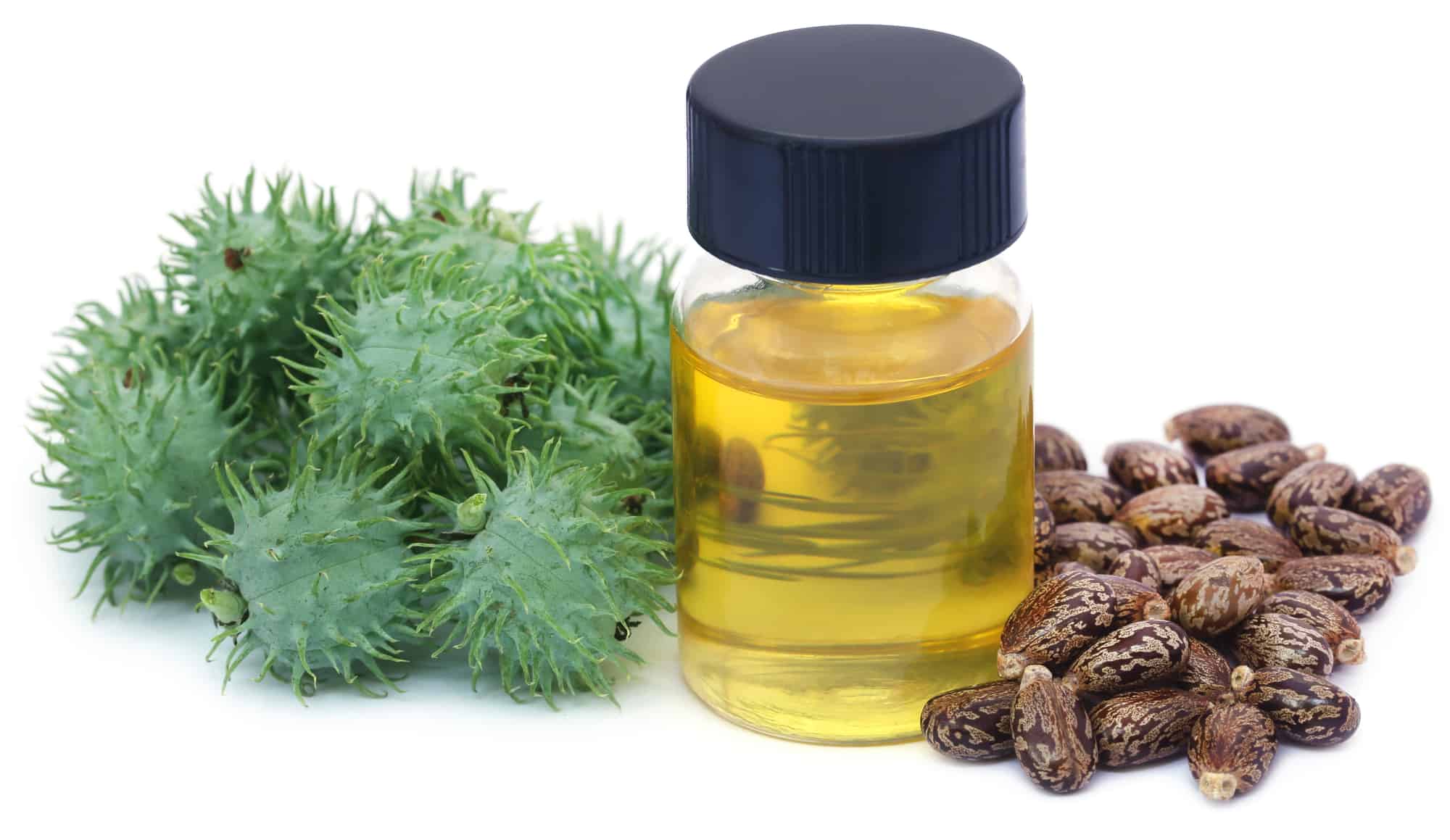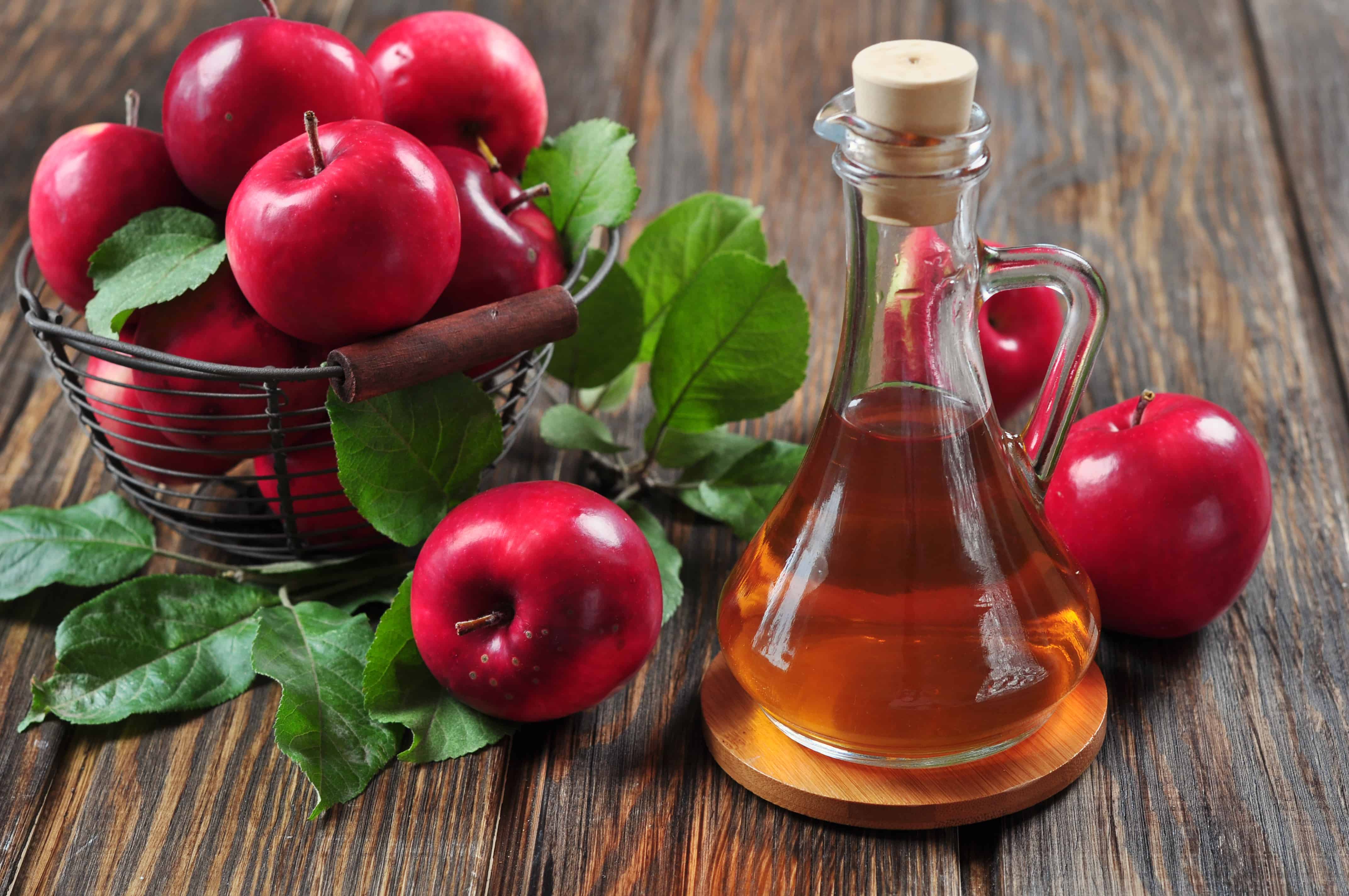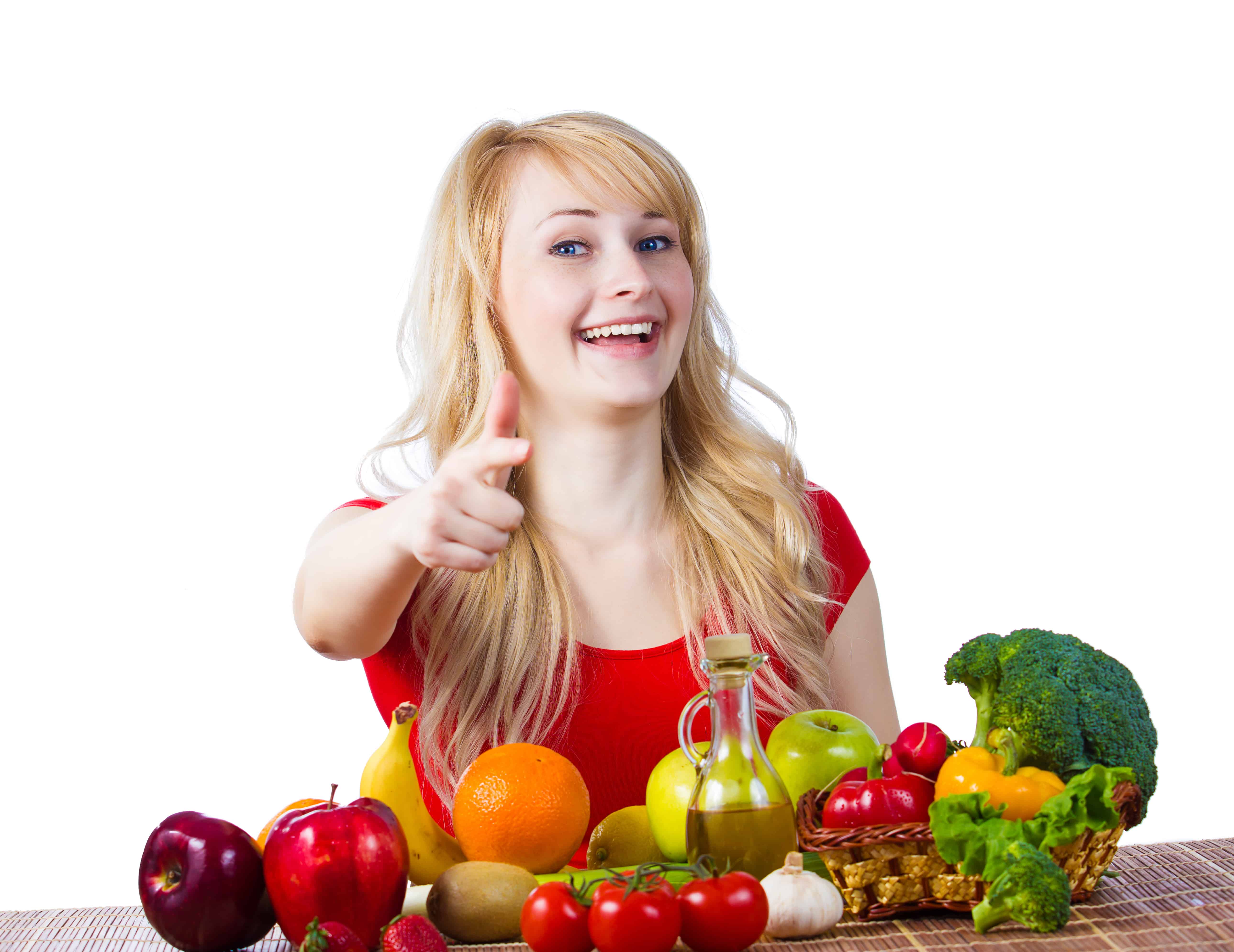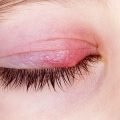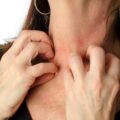What Is Seborrheic Dermatitis
Almost 5% of Americans suffer from seborrheic dermatitis, a chronic inflammatory skin condition that spares neither children nor adults.
Nearly 70% babies suffer from the condition within the first three months of life. The pediatric form of the ailment is known as cradle cap and is usually restricted to the scalp but can manifest in the diaper area as well.
Fortunately, babies are spared the full wrath of the condition as it usually resolves within a few months and typically, goes away completely within the first year. Adults have no such luck as seborrheic dermatitis turns into a chronic ailment that goes through periods of remission and flare-ups.
Although the condition is neither infectious nor harmful, it can cause persistent physical discomfort and a significant amount of mental trauma.
Causes And Risk Factors
The name of the condition offers insight on what it’s all about. The use of the term “dermatitis” clearly indicates that we are talking about a form of allergy here and then the word “seborrheic” sort of provides the explanation for the allergic reaction.
Nobody knows what exactly causes the condition. Because it affects areas with a profusion of sebum producing glands, the common understanding is that the oily skin secretion does play a role.
Actually, it’s both the sebum and fungal spores (read a kind of yeast) that feeds off sebum that are implicated in the hyper allergic response that causes the itching, swelling, redness and flaking.
Now, just because a fungus is involved, does not mean that this ailment is contagious. In fact, seborrheic dermatitis is neither infectious nor is it linked to poor hygiene.
The yeast, which is known as Malassezia, is a part of the normal microbiota not just of human skin but that of most warm blooded animals. The fat loving fungus normally lives peacefully on the human skin, feeding on sebum.
It’s not known what causes the radical increase in their population or how they end up triggering an immune response in some people.
While they continue to study and understand the life and workings of these critters, one thing is clear that seborrheic dermatitis only rears its ugly head in areas that offer ample food (sebum) for these critters. So, it’s not just the scalp that is afflicted by the rash but also other areas such as:
- The sides of the nose.
- Around the ears.
- The eyelids.
- The eyebrows.
- Moustache and beard.
- The upper back.
- The area between the shoulder blades.
- Skin folds at the arm and leg joints.
- The area right above the chest bone.
- The creases of the neck and armpits.
- The crease of the buttocks.
- The groin.
- Under the breasts.
- Around the navel.
Although a hyper-immune response causes the skin problems associated with seborrheic dermatitis, the condition does go into remission on its own. But, a myriad of factors can trigger it back into existence and these include:
- Neurological disorders like Parkinson’s disease and epilepsy.
- Hormonal fluctuations.
- Any ailment that impacts the immune system or weakens it, such as HIV/AIDS, certain types of cancers, organ transplant and alcoholic pancreatitis.
- Medical conditions that stress the body and the brain like a heart attack or cancer treatment.
- Some types of medications.
- Psychological conditions like depression, anxiety and eating disorders.
- Poor dermal care practices and alcohol based skin care products.
- Fatigue and sleep deprivation.
- Cold weather.
- Dermal dryness, dehydration and dry weather.
- Other skin conditions like acne, atopic dermatitis, rosacea and psoriasis.
- Pollution and other environmental factors.
Signs And Symptoms
- Redness and swelling of the skin.
- Greasy oily patches with yellowish-white crusting.
- Itchy rash/patches.
- Scaly patches that cause flaking.
- Flakes that appear oily or moist.
- Flakes/dandruff covering the hair on the scalp, eyebrows, beard, moustache.
- Inflamed patches that are painful or cause a burning sensation.
- Hyperpigmentation and hypopigmentation of affected areas in those with dark skin tone.
- Skin peeling.
When To See Your Doctor?
If you can’t seem to control the condition with home treatment and/or OTC products or if your symptoms seems to be worsening, it would be best to seek advice from your doctor. The big problem with skin ailments such as seborrheic dermatitis is the very real risk of secondary/opportunistic infections that can make things worse. So, consult your doctor if:
- You have a low grade fever.
- The itchy, scaly patches turn an angry red and are painful/tender to touch.
- There are clear signs of pus accumulation like oozing and crusting.
- The scaly, red patches are causing anxiety and social withdrawal.
- There is an increase in the intensity and frequency of flare-ups.
- The condition seems to be spreading to other areas of the body.
How To Use Essential Oils For Seborrheic Dermatitis?
Modern medicine follows a well-defined protocol for the treatment of this condition. Although different drugs and products are used to get the job done, the protocol generally involves:
- Removing the scales and the crusts.
- Killing most, if not, all the critters.
- Controlling the pruritus and erythema (itching and peeling).
- Lowering the inflammation, redness and pain.
- Modulating the immune response.
Steroids and antifungal formulations are mainstays in the treatment regimen. They work, but as expected, they bring along several side effects. Now, let’s talk about what essential oils can do to help with seborrheic dermatitis:
Can they treat inflammation: You betchya! In fact, many of these extracts are just as effective as corticosteroids in controlling inflammation. And there is also a bonus involved. Essential oils also greatly increase the pace of skin healing and lower stress levels, and we all know that stress can make your immune system go berserk on you.
What about the fungi: Well folks, these oils are every bit as potent as any antifungal ointment or drug out there. In fact, these extracts will not only control Malassezia but also keep a check on other opportunistic critters and secondary infections.
Will they offer reprieve from the pain: A lot of these oils have excellent antinociceptive properties; what this means is that they slow down the transmission of the pain impulse and reduce your brain’s ability to interpret and feel pain.
Are they a solution to the itching and peeling as well: Yes, the cooling and warming sensation created by these oils work as counter-irritants, controlling the body’s ability to experience the discomfort. Also, since these extracts clear excess sebum and clean the skin, they help in the faster removal of dead cells and reduce skin peeling.
And will they also help with the immune response: While immunomodulation is not a task that modern day drugs excel at, these offerings from the plant world do indeed regulate the workings of the immune system. Best of all is that this is accomplished without impacting the body’s ability to defend itself.
Wait, there’s more: And if all of that is not enough, the soothing nature of these oils helps to bring about faster skin healing and reins in the psychological impact of seborrheic dermatitis, be it stress, anxiety or fear.
Moreover, there are a myriad of ways in which you can include these oils in your treatment plan. In fact, if you don’t feel comfortable going completely natural, you can always combine these extracts with the topical and oral formulations that you are currently using. Take a look at the different ways in which you can use these oils:
- As an antifungal spray to stop the proliferation of the yeast spores.
- In combination with a carrier oil to lift the crust and make it easier to brush off the scales.
- With a gel base to control the inflammation and itching.
- Mixed with an anti-fungal shampoo to deliver a double punch to the critters.
- In the form of a mask to remove excess sebum.
- As an astringent and toner that regulates sebum secretion.
- In bath water for reprieve from pain and itching.
- Through inhalation to limit stress and regulate immune function.
- As a facial rinse for quick relief from the symptoms of seborrheic dermatitis.
Best Essential Oils For Seborrheic Dermatitis
1. Tea Tree
Tea tree oil functions as an immune system stimulant that improves the body’s ability to ward off infections. Its highly effective anti-microbial, anti-bacterial, and anti-fungal properties makes it one of the best essential oils that pharmaceutical companies want to use in natural soaps, hair shampoos and creams. This oil is a tested weapon that can be used against conditions like Seborrheic Dermatitis.
2. Neem
Neem oil has been used for centuries in traditional medicine to help in the recovery of patients suffering from skin conditions like acne, rashes, psoriasis and eczema due to its anti-bacterial, anti-fungal properties.
3. Himalayan Cedarwood
This oil eases itching due to its sedative nature. Its astringent action is considered to be most effective for treating conditions like seborrheic dermatitis.
4. Cedarwood
Cedarwood has properties that are similar to that of its Himalayan counterpart. This oil has proven to be very effective against seborrheic dermatitis due to its antifungal and anti-bacterial properties.
5. Lavender
Due to its stress relieving abilities, lavender oil has been used for all kinds of skin issues since ages. It anti-bacterial and anti-inflammatory properties make it very effective for seborrheic dermatitis.
6. Rosemary
Rosemary stabilizes oil secretions and offers relief in issues of the scalp, especially dandruff and seborrheic dermatitis. It also nurtures the scalp and promotes hair growth by improving blood circulation.
7. Patchouli
I have found Patchouli to be very effective in taking care of rough, split and dehydrated skin. Due to its anti-fungal, anti-inflammatory, antimicrobial, antibacterial properties, this oil has been used to treat dandruff, cold sores, acne, eczema, and fungal infections like seborrheic dermatitis.
8. Oregano
Research has confirmed that oregano oil can eliminate yeast and other fungi thanks to its potent anti-fungal properties.
9. Peppermint
Peppermint oil is comforting and helps alleviate itching caused by seborrheic dermatitis, while at the same time reducing the inflammation.
10. Eucalyptus
While battling with conditions like seborrheic dermatitis, if the thing that bothers you the most is inflammation, then eucalyptus is your go-to essential oil. This oil relieves inflammation almost instantly and is considered effective for treating several skin disorders.
11. Palma Rosa
An extract that exerts multiple effects to control seborrheic dermatitis, palma rosa oil is a potent skin tonic with antimicrobial properties. Geraniol, which is the principle phytochemical in palma rosa essential oil, is a powerful immunomodulatory agent that increases the production of anti-inflammatory compounds in the body (cytokines), while reducing the production of pro-inflammatory agents like TNF-alpha.
Highly recommended in Ayurveda for skin problems, this oil is prized for its ability to alleviate pain, burning and itching. Furthermore, the oil regulates sebum production and brings about rapid dermal heeling, which helps to remedy skin peeling and flaking.
12. German (blue) Chamomile
If the condition is inflammatory in nature, you will undoubtedly find German chamomile essential oil in the list of oils that can treat the ailment, and why not? The anti-inflammatory effects of this oil are at par with hydrocortisone creams.
Redness, itching, pain and swelling, this extract can control them all. Moreover, the soothing effect of the oil helps to heal the skin and eliminates pain and itching.
In addition to these, angelica root, rosewood, ylang ylang, cistus, lemongrass, and May chang oils also help to control the spread and the symptoms of seborrhea. As far as carrier oils are concerned, calendula infused oil, borage seed, evening primrose, grapeseed and rosehip seed oils work exceptionally well.
Essential Oil Recipes For Seborrheic Dermatitis
Recipe 1: Soothing gel to heal the redness and itching
- ½ cup Aloe vera gel (home made; if store-bought, it should not have chemical additives)
- 2 tsp evening primrose oil
- 4 drops lavender
- 3 drops each peppermint and Himalayan cedarwood
- 2 drop rosemary
Method
Mix the oils together in a small glass bowl. Add this blend to the aloe vera gel and whisk well. Apply on the scaly and itchy patches along the hairline and the other areas of the body (except the eyelids and eyelashes). Allow the gel to dry on your skin and then wash the treated area after an hour, using luke warm or room temperature water.
Recipe 2: The antifungal shampoo to beat all antifungal shampoos
- 2 tsp borage seed/evening primrose oil
- 10 drops palma rosa
- 3 drops lemon grass
- 4 drops patchouli
Method
Mix the oils and store in a dark glass bottle. To use, add 2-3 drops of the blend to your shampoo (antifungal or regular) and use normally.
Recipe 3: Protective and healing spray
- 50 ml Lemon, lavender, rose or helichrysum hydrosol
- ½ tsp grapefruit seed extract
- 2 drops each palma rosa, Himalayan cedarwood and German chamomile
Method
This recipe is incredibly easy – all you have to do is pour all the ingredients into a spritzer bottle and give them a good, hard shake. Then, go ahead and spray it on your scalp. Get your hair dripping wet if need be to get to the skin on the scalp. But, remember to catch any wayward drops that threaten to get into your eyes. Allow the blend to dry on your scalp, leaving it on for at least for 2-3 hours or even overnight. Shampoo your hair in the morning.
Recipe 4: Scales and flakes be gone milk
- ½ cup coconut milk
- 1 tsp licorice root extract/licorice root powder
- 1 tbsp raw honey
- 4 drops each tea tree and palma rosa
- 3 drops lavender
- 2 drop each of eucalyptus and peppermint
Method
Mix the ingredients and apply all over your scalp as well as on any other areas that are covered in itchy, flaky patches. On the scalp, go for the dripping wet effect, but as always, don’t get the mixture in your eyes. Wrap a hot towel around your head and let the blend work on your skin for 45-60 minutes. If you have a lot of flaking, you may want to run a brush/comb through your hair a few dozen times.
But be careful not to exert too much downward pressure. Once those scales are covered in the blend, they come off easily. Pressing down too hard will not help; instead, if you take a heavy hand, it will leave you with more inflammation, redness and micro lesions with a real risk of secondary infection. After the brushing or not, as required, wash off the blend with shampoo (hair) or soap (body).
Best Carrier Oils For Seborrheic Dermatitis
Olive oil
Although olive oil has long been used to treat both infant and adult seborrheic dermatitis, particularly to soften and lift up the crust and the scales caused by the condition, recent research has shown that this may not be the best choice.
The thing to consider here is this – the fungus that causes seborrheic dermatitis or rather triggers the immune hyper response, feeds on sebum. More specifically, it gobbles up the saturated fats and poops out the unsaturated fats in the form of their volatile counterparts.
In fact, the volatile free fatty acids of Oleic acid are found to be the main problem. They compromise the dermal protective barrier and allow the critters and their excrements to get deep enough into the skin to trigger the body’s immune response.
So, if you were to remove oleic acid from this equation or at least lower its quantity in sebum, the fungus would not be able to create as much trouble. Actually, in people who are sensitive to the free fatty acid form of oleic acid experience symptoms like seborrheic dermatitis even when they do not have fungal hyper-colonization.
Now, let me take this story ahead. Olive oil is chock full of oleic acid, including extra virgin olive oil. So, if you use this oil, there will be that much more oleic acid for the fungus to eat and process into its allergenic form. Hence, if you are suffering from seborrheic dermatitis, keep olive oil away from those red and flaking patches.
Castor oil
The very factor that makes olive oil unsuitable for treating seborrheic dermatitis makes castor oil a fabulous choice to deal with the condition. Ricinoleic acid (Omega 9) forms 90% of castor oil’s lipid makeup. The topical application of this lipid not only yields anti-inflammatory effects but also analgesic benefits.
Plus, the unique lipid profile of castor oil makes it a powerful antimicrobial agent. In fact, this oil is often used to treat fungal infections of the skin and other parts of the body. Because castor oil contains 6% oleic acid at the most and around 1-5% linoleic acid, it also makes up for the deficiency of linoleic acid that is often seen in seborrheic dermatitis patients.
So, castor oil can definitely be used against seborrheic dermatitis, but remember to mix it with another carrier, preferably, a dry oil (less viscous/thin) to balance the viscosity of castor oil.
Natural Treatment / Therapies For Seborrheic Dermatitis
1. Garlic
Sure it smells, but it’s full of sulfur, which is nature’s very own antimicrobial agent. Plus, the allicin in it helps in tackling inflammation as well as secondary infections. And if that’s not enough, it also contains zinc and selenium, both of which are recommended for seborrheic dermatitis.
The trick here is to use garlic in the right way because those active compounds are very strong and can cause several side effects if not applied as they should be.
So, start with 7-8 freshly peeled cloves of garlic. Use a food processor or juicer to extract the juice/pulp from the garlic cloves. Mix 1 tsp of this juice with 3 tbsp warm water and apply on the affected area. Keep the diluted juice on your skin for 10-15 minutes and then wash it off with a mild shampoo/soap
2. Apple cider vinegar
The acidic nature of ACV can also be used in the same way as garlic juice. The acid in the vinegar will help to curb the itching while killing the critters responsible for the condition.
Moreover, ACV also regulates the functioning of those wayward sebaceous glands. Mix ACV with cold water in equal proportion and apply to the affected areas. Wash off after 30 minutes.
3. Honey
When mixed with water, honey releases hydrogen peroxide, which is an effective antimicrobial agent. Plus, raw honey is known to speed up skin healing by taming the body’s inflammatory response. Mix equal quantities of honey and water and apply on the itchy, red patches. Wait for 15-20 minutes and then wash the area with room temperature water.
4. Good ol’ salt
This treatment works exceptionally well when the eyelids are afflicted by seborrheic dermatitis. Neither essential oils nor other herbs and ointments can be safely used in this area but salt can only do good. So, start with 1 heaped tablespoon of sea salt or Himalayan Pink salt. Mix it in 1- 1½ cups of water.
Soak a face cloth in the saline water and wring lightly. Place it on your eyes as you would an eye mask or eye pillow. Sure, the salt will sting a bit. However, the stinging is no more intense than the smarting you feel after a swim in the ocean. Keep the soaked face cloth on your eyes for 10 minutes and then splash regular water on your eyes to wash off the salt solution.
Diet For Seborrheic Dermatitis
Fight the inflammation on all fronts
If you are suffering from seborrheic dermatitis, you already have a problem with inflammation. Don’t add to your woes by introducing pro-inflammatory compounds into your body through the food you eat.
Making a conscious effort to stay away from unhealthy foods will make a remarkable difference to the intensity and frequency of seborrheic dermatitis episodes.
At the least, significantly lower your consumption of added sugar in all forms, trans fats, refined carbs, alcohol, processed and packaged foods, salty foods, carbonated beverages, sugary drinks, caffeine and food items that are known to trigger allergic reactions.
Give your body external healing support
Sure you can take Omega 3 fatty acid supplements but a better way to get these healthy and anti-inflammatory fats into your body is by eating 3-4 servings of seafood (fatty fish like tuna, salmon, mackerel, and sardines) each week.
Probiotics heal the body from the gut
What goes on in your gut impacts every response from your body. So, help out your tummy by sending in the good cavalry or probiotics. These gut friendly bacteria not only help to keep your digestive system in good health but also regulate immune functions and promote healthy and controlled immune responses. You can get your dose of probiotics from supplements or from a bowl of yoghurt.
Don’t forget the micronutrients
All those essential minerals and vitamins come courtesy of fruits and veggies. So, get your 4 servings of the good stuff each day. Take your pick from nutritionally dense produce like apples, pears, berries, bananas, cherries, water melon, papaya, melons, avocados, leafy greens, sweet potato, bell pepper, carrots, tomatoes and cruciferous veggies.
A water body
If you think your immune system has already gone crazy on you, wait till you take your body to the brink of dehydration and then you will now the true wrath of that immune system. Also, let’s not forget that dehydrated skin cells die faster, are more prone to hits from critters and environmental factors and vulnerable to damage. So, drink up your H2O to give those cells a fighting chance against the fungus and the damage it causes.
Herbs and supplements
Even minor flavorful changes to your food, like the addition of ginger and garlic herbs like mint, rosemary, basil, parsley, thyme and oregano and spices like cinnamon and turmeric can make a world of difference to the health of your skin.
The best part of using herbs and spices is that you only need a very small amount to create a big splash. So, ask for flavor because it’s your right and it’s good for you!
That said, there are several adaptogenic herbs and botanicals available in supplement form that play an important role in regulating the immune system. Ayurveda practitioners often recommend giloy, amlaki, manjishta, neem and licorice root powder supplements to calm inflammatory skin problems.
Modern medicine recommends the use of zinc and biotin. But supplementing with zinc only works if a deficiency of the mineral is causing the condition.
Seborrheic Dermatitis vs Psoriasis
The most striking difference between seborrheic dermatitis and psoriasis is the involvement of the sebaceous glands and their secretions in the pathogenesis of the former. Because the onset of seborrheic dermatitis can be traced to the hyper functioning of the sebaceous glands, oily, greasy skin and larger than normal pores are the hallmarks of the condition.
In contrast, psoriasis is linked to extreme dermal dryness. Although both conditions lead to inflammation, red, itchy patches and scales and may look the same, the quality of the scales offers a clear indication of which skin ailment you are dealing with.
Psoriasis causes silvery scales on reddened areas of the skin and these scales run thick as the accumulation of dead skin cells builds quickly. An attempt to remove these scales can cause bleeding, and as such, if you respond to the itching, you will likely end up with bleeding and sore patches.
As opposed to this seborrheic dermatitis scales are thinner and come off easily. Also, they have a yellowish-white appearance owing to the involvement of skin oils in the condition. Moreover, psoriasis seldom limits itself to the scalp, and patients often develop plaques on the outside of their elbows and knees.
While seborrheic dermatitis patches can also be seen in skin folds, if they appear on the joints, it’s on the inside where the skin folds and forms creases. Nail pitting is another common sign of psoriasis that is absent in seborrheic dermatitis.
Now, here is the real bad news- A person can suffer from both conditions simultaneously, which makes a proper diagnosis crucial for the control and treatment of the ailment.
Seborrheic Dermatitis vs Dandruff
Think of dandruff as the mild mannered and shy cousin of seborrheic dermatitis. Although there is skin flaking involved, it is mostly restricted to the scalp if you are dealing with dandruff. Critters play a role in the onset of both problems, but dandruff never causes skin redness and inflammation on its own. It’s only when you scratch your skin that you end up with tiny wounds and redness.
Although dandruff can move to other areas of the body covered with dense hair like the eyebrows, it never affects non-hair covered or sparsely covered skin. Also, there is no skin peeling or oozing rash involved and the itching too is mild in case of dandruff, as compared to the intense pruritus caused by seborrheic dermatitis.
The Bottom Line
Considering that essential oils work generally well for most of us, I suggest that anybody suffering from seborrheic dermatitis should try them at least once.
While pharmaceutical treatments can be helpful in some cases, they are generally limited to only suppressing the symptoms. The multifaceted healing abilities of essential oils, whether anti-fungal, antibacterial or antispasmodic can be used to address the root cause of the disease while at the same time allowing the skin to heal, renew and restore in a gradual and natural way.




